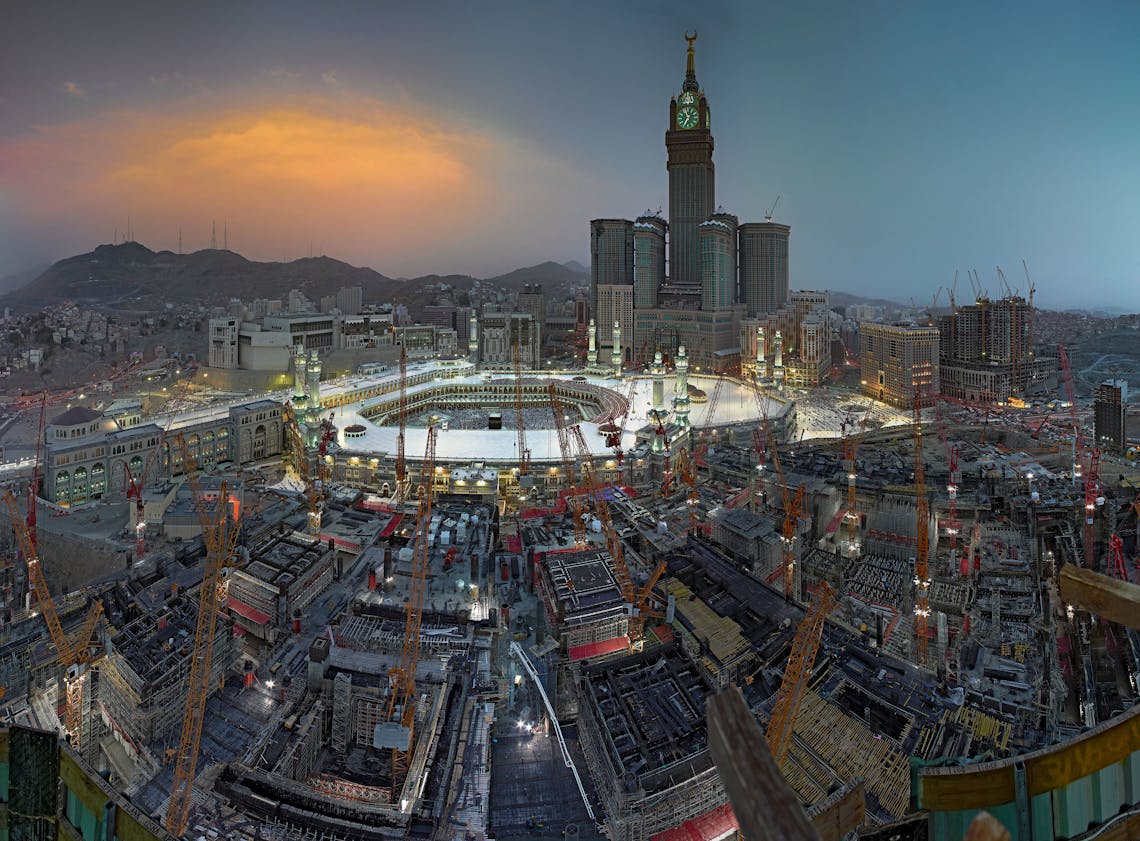The first-ever solo museum exhibit by a Saudi artist in the U.S., Ahmed Mater’s “Symbolic Cities” presents an alternate narrative to the images of the desert kingdom familiar to most Americans. On view at the Sackler Gallery, the fascinating photographs and videos reveal the recent urban development of the Saudi landscape, offering what curator Carol Huh terms “an essential archive — or unofficial history, as [Mater] calls it — of contemporary Saudi Arabia … at a time of profound social and political change.”

Golden Hour, 2011, from Desert of Pharan
“Symbolic Cities” focuses on Mecca, Islam’s holiest city and the destination of the annual hajj pilgrimage made by observant Muslims; the city has long intrigued outsiders because it is off-limits to non-Muslims. The exhibit’s centerpiece is “Golden Hour,” a large photograph chronicling the transformation of central Mecca, shot by Mater in 2011 from atop a construction crane placed where a mountain once stood. Here we take a closer look at the photograph, which Huh calls “the iconic image of the series.”
The Kaaba
The Kaaba, the black, cube-shaped shrine in the center of Mecca’s Grand Mosque, is the most sacred site for Muslims, who believe it was built by Abraham. Circling around the Kaaba seven times is part of the hajj ritual, one of the five pillars of Islam. The Saudi government has constructed a massive complex around it to manage the more than 2 million pilgrims who descend there each year. Photos of Mecca typically show close-ups of the Kaaba surrounded by a mass of people; Mater challenges this representation with a distant shot that reveals the intricacies of its environment.
Clock tower
Saudi authorities tore down an 18th-century citadel to build the Abraj al-Bait, or Mecca Royal Clock Tower. The second-tallest building in the world when it opened in 2012, the commercial complex includes luxury hotels, apartments and a shopping mall. In another work in the exhibit, “Nature Morte,” Mater frames a garish, green-tinted nighttime shot of the Kaaba through the window of a $3,000-a-night room in the complex’s Fairmont Hotel, with an incongruous plush red velvet armchair and perfectly arranged fruit bowl on a small lacquered table in the foreground.
Economic boom
Mater foregrounds the vast number of cranes and construction sites in downtown Mecca to highlight the almost absurd amount of expansion that has overtaken the city in recent years. “Nothing here is built on the human level,” says the artist, who spent a year in Mecca documenting the changes in the city and the migrant laborers working on these major architectural projects. The title of the piece, “Golden Hour,” is a reference to the building blitz sparked by the recent expansion of the Saudi economy, which has since taken a nosedive.
Urban sprawl
In the background, far from Mecca’s symbolic sights, is a glimpse of the urban sprawl of a city now home to well over 1 million people. In other photos, Mater records the almost shantytown-like dwellings where many non-Saudi residents live, what he calls the “real” Mecca in the title of one piece. In another photographic work on display, “Disarm” — a series of light boxes with blueish negatives of photos Mater took from a military surveillance helicopter — the outskirts of the city take on the aura of an almost alien landscape.